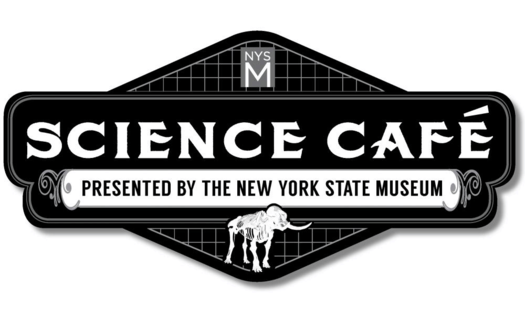State Museum's Science Cafe and Brainfood for the Curious are back

A few upcoming events connected to the State Museum...
Science Cafe
The Science Cafe series at the City Beer Hall returns Monday, October 17 with a program about archaeology and the history of Albany. Michael Lucas, the State Museum's curator of historical archaeology, and Charles Gehring, director of the New Netherland Research Center, will be there for a discussion titled "Beverwijck, A 17th-c. Dutch Village, Above and Below Ground."
The event starts at 6 pm. Admission is free -- food and drink are not included. (And these events have been popular in the past, so it's worth showing up a little bit early if you want to grab a seat.)
Brainfood for the Curious
The State Museum's "Brainfood for the Curious" series of lunchtime talks in the Huxley Theater starts back up against Tuesday, October 11. A museum historian or scientist gives a 20-minute talk and then answers questions. The talks cover all sorts of topics, from art to wedding dresses to politics to archaeology to biology. Each event starts at 12:10 pm.
Here's the schedule for the new season...
All blurbage via State Museum.
October 11: Thomas Cole: Adirondack Painter?
Learn about Thomas Cole's neglected Adirondack work by viewing images of his sketches and paintings from his adventures, beginning with his 1826 trip to Lake George that resulted in his Ticonderoga and The Last of the Mohicans paintings.
October 25: Something Old, Something New
Walk down the aisle of history and explore the Museum's wedding dress collection. Learn how these dresses reveal changes in both the fashion and ritual of wedding garments.
November 8: New York's Presidents and Presidential Contenders
Six presidents have hailed from New York; another nine have run for the nation's highest elected office but lost. Explore the history of these New Yorkers and their quests for the White House.
November 22: Erie Canal Warehouse
Learn about the history of an Erie Canal warehouse in Mohawk, NY. Many objects from the warehouse will be featured in the Museum's upcoming Erie Canal exhibition.
December 6: The Origin and Evolution of Birds
New technologies in genetics have offered scientists new insights into when and how birds evolved. Coupled with a new view of the fossil record, which suggests that birds evolved from dinosaurs, this is a very different picture of bird evolution.
December 20: Bowfin Taxonomy and Systematics: Re-Evaluating a Century of Stasis
Hear about current research efforts to unravel the complex history of the Bowfin, a primitive fish found throughout New York and the Eastern United States.
January 10: How Long Does It Take To Build a Landscape? Examples of How New York's Finger Lakes Developed
Long recognized as product of glaciation, learn how new research provides context on the origin and antiquity of the Finger Lakes.
January 24: Turned to Stone: The Processes of Fossilization
How do fossils form? Discover the various ways organisms and their activities can become fossilized.
February 7: Ecosystems Out Of The Ice Age
At the height of the Ice Age nearly 25,000 years ago, New York was almost entirely covered in ice. Hear about how ecosystems evolved from the barren land after the Ice Age to what can be seen outside today.
February 21: An Update on Fieldwork and Collection-Based Research at Schuyler Flatts, the Nicoll-Sill House, and the Van Schaick Mansion
Museum archaeologists have been conducting fieldwork at several historic sites in the Albany area. Learn about their findings and plans for 2017.
March 7: Deciphering the Still Largely Unknown Geology of the Catskills
Between mountains to the east and a broad shallow sea to the west, the nearly 400 million year old rocks of today's Catskills were formed. Still little known, the Devonian-age rocks of the Catskills continue to reveal their secrets.
March 21: Introduction and History of the New York State Museum's Malacology Collection
Learn about the Museum's mollusk shell collection and some of the historic acquisitions that have contributed to its breadth.
April 4: What Can Apatite Tell Us?
Apatite is the most common phosphate mineral on earth. Discover how apatite is used in a variety of forms, including in jewelry, hybrid cars, computers, and smartphones.
... said KGB about Drawing: What's something that brought you joy this year?